EHCPs: Supporting our youngest children with SEND

Education, Health and Care Plans (EHCP) were introduced into practice in 2014, replacing the previous statements of education. The main aim of EHCPs is to set out a child’s specific needs and how they should be met by the professionals working with a child and their family. An application for an EHCP can be made if a child has more than one professional supporting them.
An application can be made by any one of the professionals working with the child across education, health and/or care and can also be initiated by a parent/carer if they want to. An EHCP is a legal document that sets out the statutory roles and responsibilities of everyone working with the child and their family, to ensure that a child’s needs are met. If a child attends an early years setting, it is often the child’s key person and the setting SENDCo who apply for an EHCP, as they often are people who have the most professional contact with a child. A child does not need a diagnosed SEND to be able to apply for an EHCP, but the application must show that a child has identified needs and/or learning difficulties that would be best met through an EHCP.
Any professional who has come across the application and reviews of EHCPs knows that it is a mammoth undertaking and there are so many aspects of them that can be challenging. This article aims to provide a little insight into how an EHCP can support our youngest children with SEND and briefly highlight some of the key points that make a good EHCP.
How can an EHCP support a young child?
Learning and development:
It can be challenging within some local authorities for a child under the age of 5 years to be given an EHCP. It is widely reported that the SEND system is in crisis, with many local authorities facing budget and service cuts. Due to this, some local authorities may argue that education under the age of 5 is not compulsory and it is better to wait until a child starts formal education before an EHCP application should be made. It also may be suggested that a ‘watch and wait’ approach may be more beneficial to see how much progress a child makes and to gain more evidence of a child’s needs.
However, it is a child’s right to have an EHCP from birth if it is considered to be in their best interests. Furthermore, early intervention is proven to have a positive impact on a child’s future learning and developmental outcomes. Therefore, it can be extremely beneficial for a young child to have an EHCP from the earliest stage possible. An EHCP can support a child in their learning and development as it sets out clear targets and next steps that a child will be directly supported in to be able to achieve them. It can also open up avenues of funding, which can help an early years setting make the necessary adjustments to ensure that a child has the right level of support and resources to be able to access learning opportunities alongside their peers.
Safeguarding:
From a different perspective, an EHCP can help to safeguard young children with SEND. It is acknowledged that young children with SEND are one of the most vulnerable groups in society and are often at risk of abuse and neglect. An EHCP, as a legal document, places a written accountability on all the professionals working with a young child. Too many serious case reviews have been launched due to the death of a young child, many of which have highlighted systematic failures in the services and professionals working directly with a child and their family. In nearly all serious case reviews that are conducted, a leading recommendation is that professionals work more effectively together and have more open lines of communication and information sharing. I think that an EHCP can provide a platform for this to happen. An EHCP requires input from all the professionals working with a child and invites them to attend EHCP review meetings. This provides a valuable opportunity for all professionals to come together to discuss a child’s needs and how they can be best supported. It also provides an opportunity to share any concerns or highlight anything that may not be working.
Transitioning to primary school:
Having an EHCP in place in the early years can help a young child access the most appropriate educational setting when it comes to transitioning to primary education. A child with SEND has a right to attend a mainstream educational setting, but it is also their right to attend an alternative provision. An EHCP will set out a child’s needs and how they can be met, which will aid them in getting the right level of support in a mainstream educational setting and support the child’s transition from one educational setting to another. Equally, a child will often need an EHCP in place to enable them to apply for an alternative/specialist placement.
I would argue that the transition to primary school is one of the main reasons that I encourage early years practitioners to apply for an EHCP before a child is due to start. Although a primary school may have the resources to support a child with SEND, it still might not be the most appropriate provision for some children. A child in an early years setting in a pre-school room is typically on a 1:8 ratio and in smaller class sizes. In a typical reception class in a mainstream primary school, this ratio can be as high as 1:30. Without an EHCP, a child may only have their needs met through reasonable adjustments and will unlikely have the provision of an additional support person put into place. Therefore, not only will a child with SEND be expected to be on higher ratios, but they also have to manage being in a busy, noisy classroom with potentially 29 other children. The sensory input this brings may be overwhelming for a child with SEND and may prevent them from being able to access any learning activities.
Too often children with SEND who need an EHCP will start a mainstream primary school without one and within the first term they are being excluded because it is realised that the school cannot meet a child’s specific needs. This can then leave young children out of education while they wait, sometimes months, to get an EHCP in place and apply for a more appropriate, alternative educational provision. This can have a significant, detrimental impact on a child’s learning and development and their mental health and wellbeing.
Therefore, it is important that children who need them can have an EHCP in place at the earliest possible point. It is also important to remember that often the deadline for applications for a school placement happens as early as a year before they are due to start. If you take this into account, plus the timeframe for an EHCP request to be made, processed and granted, this could be as much as 12-18 months before the deadline for a school application is due. In terms of chronological age, this would mean a request for an EHCP should be made by the time a child is between 2-3 years old.
What makes a good EHCP
From the initial EHCP application to the final plan, there are a few key points to ensure that it reflects the views of everyone involved, that it effectively sets out to meet the needs of the child and supports them in achieving their next steps.
Clear, concise and accessible:
As early years practitioners, we have our own professional language. We use acronyms and phrases that are early years specific. Likewise, all the professionals working with the child will come with their own professional language. To ensure that an EHCP is accessible to everyone included within it, it is important to try and avoid acronyms and phrases and keep your language clear and concise. The principle of an EHCP is to highlight a child’s needs and care should be taken to state exactly what they are, without them getting lost in lots of words and paragraphs around them.
Evidence-based:
One of the biggest reasons why EHCPs are rejected at the point of a needs assessment is due to a lack of evidence. Clear evidence is essential to be able to highlight a child’s needs and to show the specific areas of difficulties they are experiencing. You should highlight how a child is encountering barriers to their learning and development, what strategies you have already implemented and any evidence to show that despite the efforts you have put in, the strategies are not effective enough to meet a child’s specific needs. Evidence can come in many forms, such as letters and reports from other professionals. However, as an early years practitioner, you are the professional who will spend most of the time with a child and the evidence that you include can make a difference to a child being granted an EHCP or not (no pressure!). Therefore, ensure that you are making high-quality observations and assessments and include them as key pieces of evidence. Although the premise of an EHCP is to identify a child’s needs and difficulties, it is also important to include what the child can do and what is currently working well for them.
Outcome-based:
I am not a person who likes the term ‘outcome-based’ as I believe that it can sometimes place the focus on the outcome or result, rather than the journey that is taken by a child to get there. It does not always account for the pace that a child wants to take, rather than what is expected of them from professionals. Also, not everything a child achieves is measurable in terms of being able to link them directly to pre-set curriculum statements. However, personal opinions aside, EHCPs are unavoidably outcome-based. Therefore, when you are setting the outcomes, you should ensure that they are SMART (Specific, measurable, attainable, realistic and time bound). They also have to be purposeful in terms of how they will support the child in making progress (they need to be relevant to the individual child and their specific needs).
Child’s voice:
A key aspect of an EHCP is that it should include the voice of the child. It is not good enough to simply state that a child is too young to have a voice in an EHCP. An EHCP is a child’s plan and therefore they should be at the centre of it and have a say in what is included. As professionals our priorities and what we think is best for a child may conflict with what is important to them. Therefore, as far as reasonably possible, the voice of the child should always be included. Young children may be non/pre-verbal, therefore you must think of ways that you can capture their views, wants, interests and needs. This can be done through observations and getting to know the child and re-representing their voice in their EHCP.
Parents/carers voice:
In addition to capturing the child’s voice in an EHCP, it is also important to acknowledge and include the views of the child’s parents/carers. Ultimately, they know their child the best and what may or may not work for a child. It is also important to consider how much responsibility you are placing on a child’s parent/carer. Looking after a young child can be exhausting for many parents but for those with a child with SEND, this can be even more so. It is important to make a parent/carer feel valued and included but not to overwhelm them. Consider how many of the outcomes you are setting in an EHCP fall to a parent/carer. The purpose of an EHCP is to be supported by multi-agencies/professionals, to ensure that the outcomes are shared across all of them and not just left to the parents/carers.
Conclusion
It is not unusual for EHCP applications made in the early years to be rejected. The leading reason is often due to a lack of evidence. Although this can be extremely disappointing for everyone involved, it is important to re-apply. This may mean gathering more evidence and making more referrals to other professionals. Unfortunately, as it stands, EHCP processes and procedures are a huge undertaking for early years practitioners and can come with time and financial costs, often taken out of pocket from the setting itself. However, the benefits of having an EHCP in place for a child, especially when they are ready to make the transition to primary school are invaluable. As early years practitioners it is our role and responsibility to support a child’s learning and development from the earliest point possible and ensure that their needs are met to enable them to reach their full potential, which often means going above and beyond to ensure that they can.
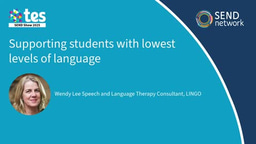
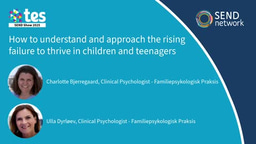
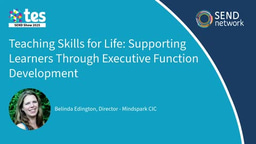
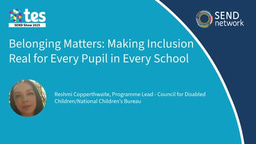
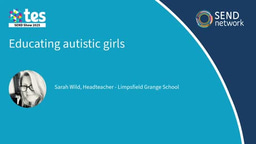
Please sign in or register for FREE
If you are a registered user on SEND Network, please sign in